|
| |
- This page contains information and pictures about Fungus-eating Ladybird Beetles
that we found in the Brisbane area, Queensland, Australia
-
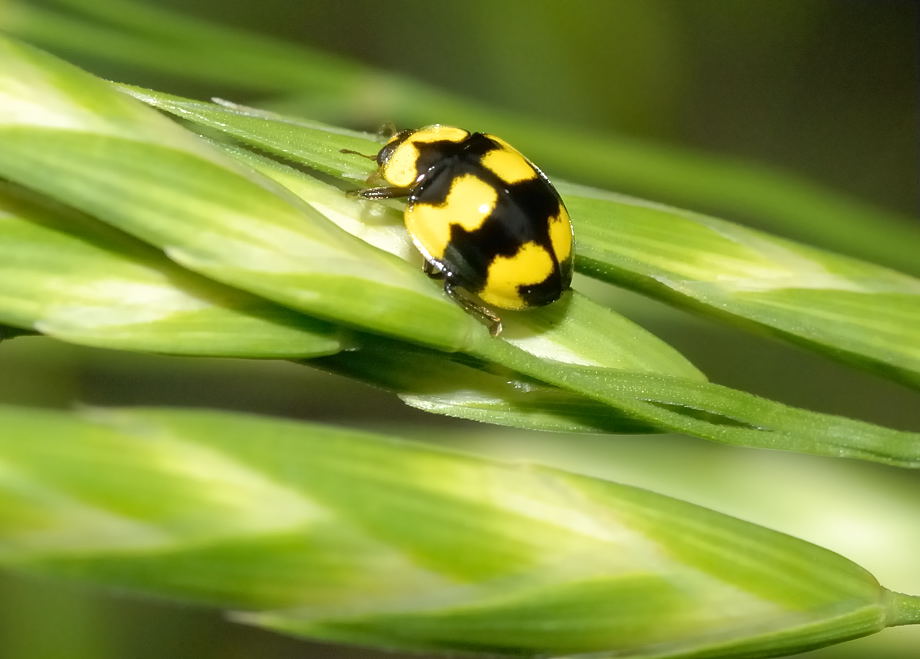 - Body length 4mm
-
- Fungus-eating Ladybirds are
very fast moving insects and the active fliers. When disturbed, they usually employ
the drop and fly-away method to escape. They are smooth and shiny with bright
yellow dots on black colour.
-
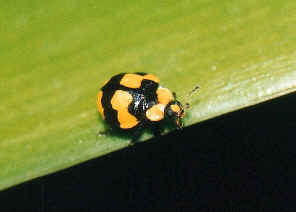 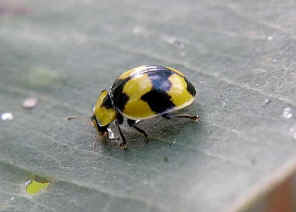 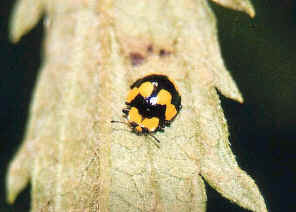 -
- We found quite a number of them on different plants including Rosaceae in late
spring, early summer and late summer.
-
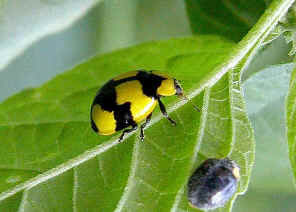

 -
- We often see them on different types of
plants. Both adults and larvae feed on fungus and black mold on leaves. Above
pictures show the Fungus-eating Ladybird and the Yellow
Shouldered Ladybird.
-
Larva
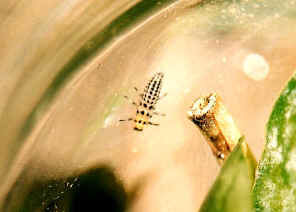  -
Photo: Keith Power, Toowoomba
-
- The Fungus-eating Ladybird larvae grow up to 8-10mm. They are creamy
white in colour with lines of black dots on their back. They are usually found
feeding those black mold or fungus on leaves. The larvae runs very fast when disturbed.
-
- Larvae feed only on powdery mildew type of fungus (Oidium
sp., Erysiphales) which infecting various plants.
-
Pupa
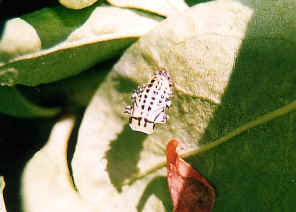 -
- The pupa are quite active too. When disturbed,
the pupa stand up on it end. The pupa are also white in colour with lines of black
dots.
-
- Reference:
- 1. Illeis
galbula - Morwell National Park Online
- 2. Australian Ladybird Beetles
(Coleoptera: Coccinellidae) Their biology and
classification - A.Ślipiński, Australian Biological Resources,
2007, p167.
-
[ Up ] [ Transverse Ladybird ] [ Variable Ladybird 1 ] [ Variable Ladybird 2 ] [ Variable Ladybird 3 ] [ Common Spotted Ladybird ] [ Three-banded Ladybird ] [ Netty Ladybird ] [ Striped Ladybird ] [ Fungus-eating Ladybird ] [ Spotted Amber Ladybird ]
| |
|










